Miniature Husky
April 11, 2023 2023-04-11 12:02If you’ve always loved the idea of owning a Siberian Husky but don’t have space for a large dog, a Miniature Husky could be the answer.
With its striking coat and almond-shaped eyes, the type of Husky looks like a Siberian Husky after it’s been through a shrinking machine. The broad muzzle, fluffy coat, and wolf-like appearance are all there, but everything’s just that little bit smaller.
Playful, energetic, and unerringly cute, the Mini Husky will easily worm its way into your heart. As lovable as they are, Miniature Huskies aren’t for everyone. Like the Siberian, the Mini is a high-energy working dog that requires lots of daily exercise and stimulation
We’ve compiled a list of the most frequently asked questions about the Miniature Husky and thoroughly researched the answers to provide you with the most comprehensive knowledge of this miniature breed. Find out all about its origins and oddities before deciding if this is the best dog for you.
Table of Contents
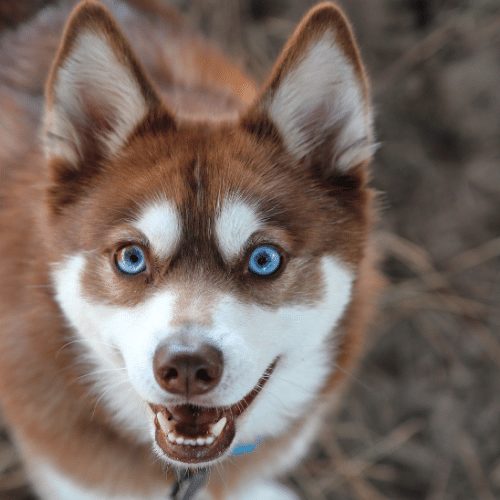
Where Did The Breed Come From?
Like many designer breeds, the Miniature Husky first emerged in the Nineties when Husky breeder Bree Normandin decided she wanted a pint-sized version of the well-known sled dog.
To create the miniature breed, Bree carefully bred the smallest of her Siberian Huskies, otherwise known as the runts, until she created a miniature version.
Breeding runts in this manner is controversial. As the runts are the weakest of a litter of puppies, they could grow into weaker dogs, although there has been no indication of this in the Miniature Husky.
By and large, Mini Huskies seem as healthy as the larger standard Husky and have a similar life expectancy of around 12 to 15 years.
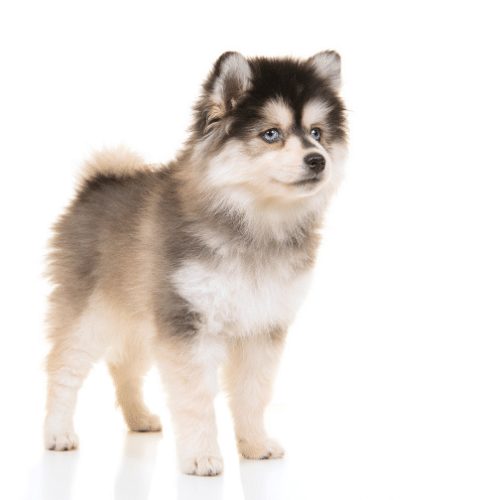
What Does a Miniature Husky Look Like?
With their thick, fluffy coats, and piercing eyes, the Mini Husky looks just like a miniature version of the Siberian Husky.
Wolflike in appearance, Mini Huskies have erect ears and broad muzzles. Their noses are either black or brown, and they will exhibit the “iconic fluffy sickle tail” of the Husky breed.
With its similar coloration and facial markings, the Miniature Husky is easily confused with the Alaskan Klee Kei, which is a cross between the Alaskan Husky and the Alaskan Eskimo Dog.
The Klee Kei is generally smaller than a Mini Husky, however, and somewhat lighter.
Like both the Siberian Husky and the Klee Kai, the Mini Husky can have blue, brown, or green eyes. They are also known for having different colored eyes – a condition known as Heterochromia.
The most common coat pattern for a Mini Husky is a black and white combination that features striking markings on both the face and body. Miniature Huskies also come in various colors, not dissimilar to those seen on the Siberian Husky. These can range from pure white, through red and white, to piebald.
How Big Is a Mini Husky?
Miniature Huskies are a small breed of dog, standing up to 17 inches tall and weighing no more than 35 pounds.
Females tend to be smaller, measuring around 13 to 16 inches tall and weighing between 20 and 30 pounds.
Miniature Siberian Husky vs. Miniature Husky
The terms “miniature husky” and “miniature Siberian husky” are often used interchangeably, but there is some controversy over whether they are the same type of dog.
Some breeders and enthusiasts consider the miniature husky and miniature Siberian husky to be the same breed, with the only difference being their size. They argue that both dogs are simply smaller versions of the Siberian husky, which is a recognized breed by the American Kennel Club (AKC).
However, others argue that the miniature husky is a separate breed that was developed through selective breeding to create a smaller version of the Siberian husky. They point to differences in appearance and temperament between the two breeds as evidence that they are distinct.
In general, both miniature huskies and miniature Siberian huskies share many characteristics with their larger counterparts, including their thick coats, high energy levels, and friendly personalities.
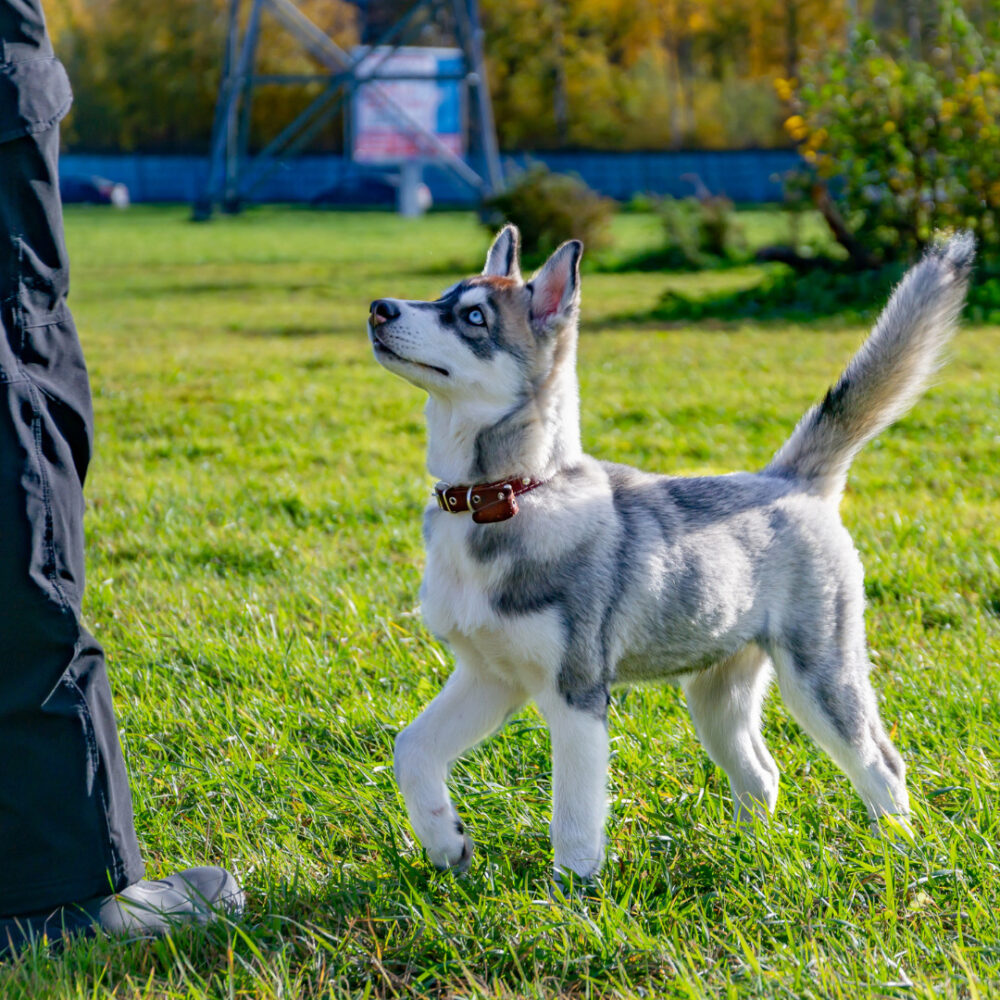
How Much Does a Miniature Husky Cost?
Even though the Miniature Husky isn’t a recognized breed, some breeders specialize in producing these miniature balls of fluff.
These little dogs are proving almost as popular as the Siberian Husky, which ranks 15th on the American Kennel Club’s 2019 most popular breeds list.
As a result, there’s a high demand for Mini Husky puppies, which can drive prices sky-high. (This by the way also applies to other Miniature versions of breeds, such as the Miniature Corgi.)
Fortunately, Miniature Huskies have large litters of up to 11 puppies at a time, which helps to offset the high demand.
If you’re lucky, you might find a Mini Husky puppy for as little as $600, but you could pay as much as $3000 for one with particularly striking markings. To be on the safe side, you should budget for around $1500. These prices are similar to what regular-sized Huskies cost.
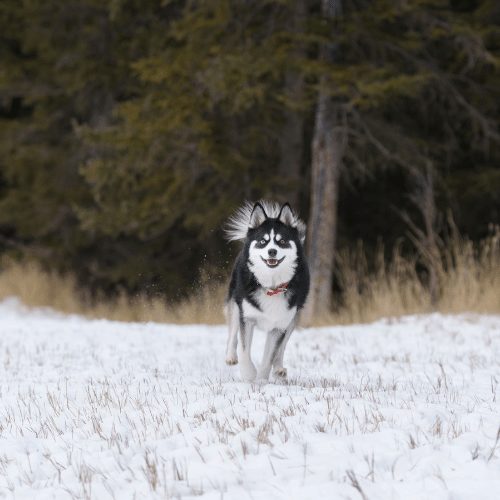
Do They Make Good Family Pets?
Like the Siberian Husky, the Miniature Husky combines a fluffy coat with an eye-catching appearance and a slightly goofy personality that’s almost impossible not to fall in love with.
Their friendly temperament and affectionate nature make them ideal family pets, assuming you can cope with the heavy shedding!
Mini Huskies love attention and children but can become over-excited so you should always supervise their games. As energetic as the original sled dog, the Mini Husky needs almost as much exercise as it does attention.
Active families will love the Mini Husky’s exuberance and love of life. It’s worth bearing in mind, however, that the Miniature Husky has a mischievous streak that can result in unwanted behavior if he doesn’t get enough exercise.
If bored or left alone for long periods, this companionable breed can become restless, leading to destructive and unwanted behavior. Mini Huskies are skilled escapologists, and a secure yard or garden is required to keep them from venturing out into the wider world.
Affectionate and sociable Mini Huskies make great family pets and enjoy a range of family activities while providing their humans with endless entertainment.
Do They Need A Lot Of Grooming?
One of the downsides of the Miniature Husky is the amount of fur it has, and how much of that ends up all over your clothes and furniture.
Miniature Huskies have a thick, double coat that insulates them against the cold and protects them from the sun. Unfortunately, it also mats easily so you will need to groom your dog at least twice a week to keep his coat in good condition.
To minimize shedding, you may need to groom him daily using one of the best brushes for Huskies.
Despite being high maintenance in the grooming department, Huskies are amongst the cleanest of dog breeds. They won’t fill your house with pungent doggy odors nor will they need showering regularly as they clean themselves. You may even see your Miniature Husky grooming himself in a catlike fashion.
Obviously, any dog arriving at your door covered in mud is asking for a bath, but this the only time you need to scrub a Mini Husky.
Although clean, Mini Huskies shed a lot of hair, making them unsuitable for people with allergies and those that hate vacuuming!
While it may be tempting to give your Miniature Husky a haircut and save yourself the bother of daily grooming, don’t contemplate it for a minute. This dog breed needs its coat for protection all year round, insulating them in winter and protecting them from the sun in summer.
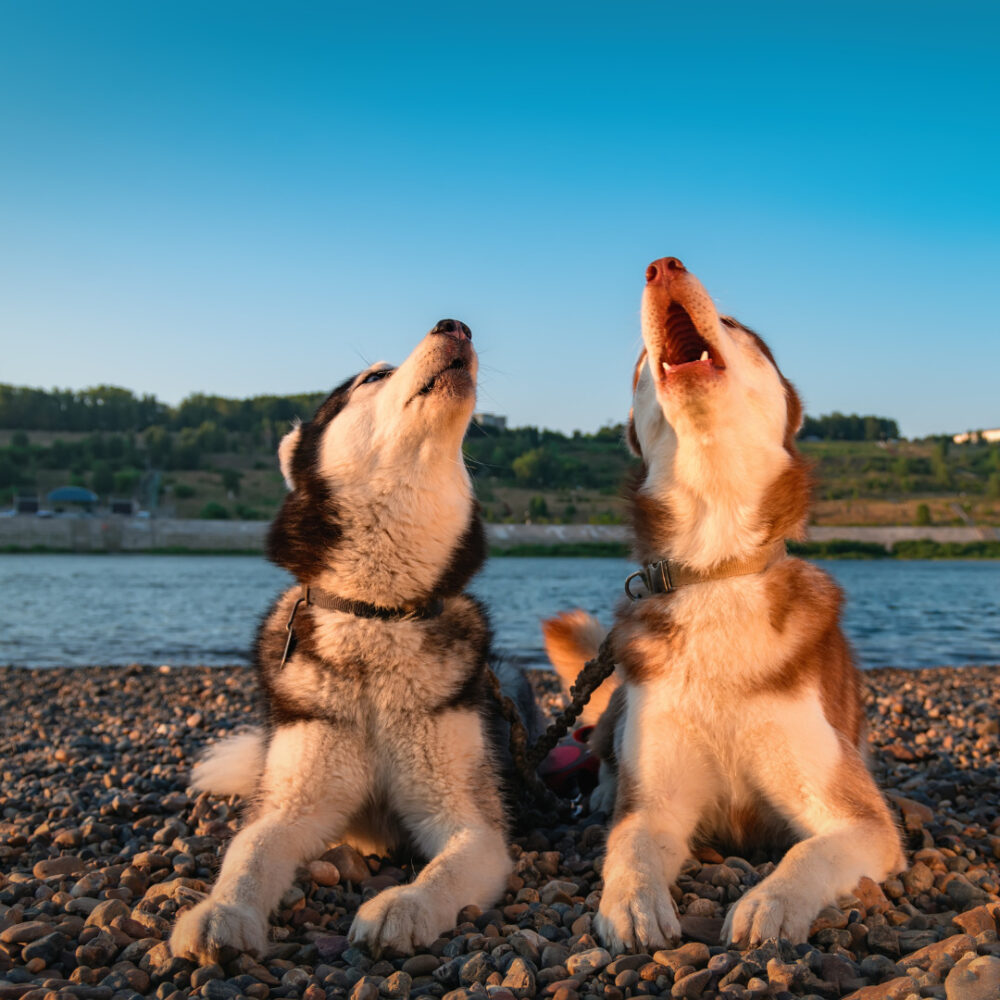
Are Miniature Huskies Easy To Train?
Miniature Huskies are intelligent, energetic dogs with a stubborn streak that first-time owners may struggle to get the better of.
Mini Huskies benefit from short puppy training sessions that are dynamic and rewarding. Huskies of all types respond well to positive reinforcement methods, but the pocket-sized version will test your patience from time to time.
Do These Dogs Have Any Health Problems?
Miniature Huskies haven’t suffered as a result of their selective breeding but are susceptible to the same health conditions as the standard-sized Siberian Husky.
These include:
- Eye issues – cataracts, glaucoma, and progressive retinal atrophy
- Skin problems – follicular dysplasia
- Hypothyroidism
Regular trips to the vet can ensure your Mini Husky is in dog health and will live an active life up to the age of 12 to 15 years.
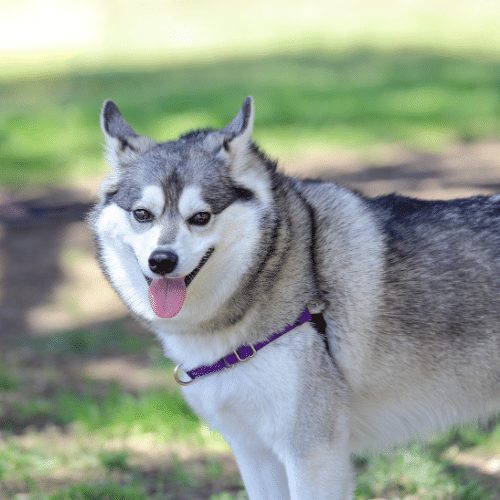
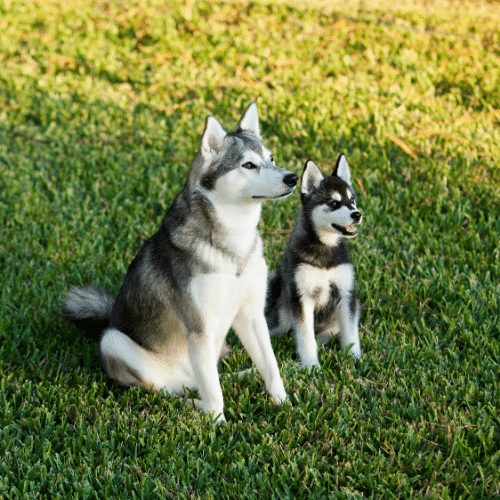
Do Mini Huskies Bark A Lot?
Huskies aren’t nuisance barkers like the terriers and lack the aggression that makes for a good guard dog.
Your Miniature Husky is more likely to welcome an intruder than bark at them!
Although they may not be amongst the world’s greatest barkers, Miniature Huskies are far from silent. Like their wolf cousins, Mini Huskies love to howl and may disrupt your household with their nighttime songs unless you train them correctly.
Does This Dog Breed Have A Good Temperament?
The Miniature Husky is a big personality crammed into a small, fluffy package. As loyal and affectionate as the Siberian Husky, the Mini version is generally more loving than most working dog breeds.
If you do share your house with a Mini Husky, be prepared for him to plant a flurry of wet kisses on you every chance he gets.
As energetic as you’d expect a descendant of the workaholic Siberian Husky to be, Minis are happiest when occupied and excel at high-energy sports like agility and obedience. They may not have the pulling power of their Siberian cousins, but they’re still very athletic and full of energy.
Don’t expect your life with a Miniature Husky to be all plain-sailing, though. They can be stubborn at times and may try to dominate as they mature and gain confidence. All you need to turn a stubborn puppy into a well-manned adult, however, is a firm hand and lots of patience.
What Should I Feed A Miniature Husky?
Despite being small, a Miniature Husky needs a diet that matches his high energy levels.
Whole-food ingredients will be easier for him to digest, especially when he’s a puppy, while the right balance of fat, protein, and carbohydrates will keep him energized.
Good-quality dry and wet foods that are veterinarian recommended are your best options although some Husky owners opt for a raw food diet that suits their dog’s more sensitive digestive system.
Do They Have a Strong Prey Drive?
Like the Siberian Husky, Miniatures have a strong prey drive, but fortunately lack the size and strength to take down household cats, which their Siberian cousins are prone to do.
Given the slightest opportunity, however, your Mini Husky will set off in hot pursuit after anything that moves.
That means your garden will become instantly squirrel-free and that any rabbits, guinea pigs, and other small pets must be properly secured before you bring your Mini Husky home to meet the family.
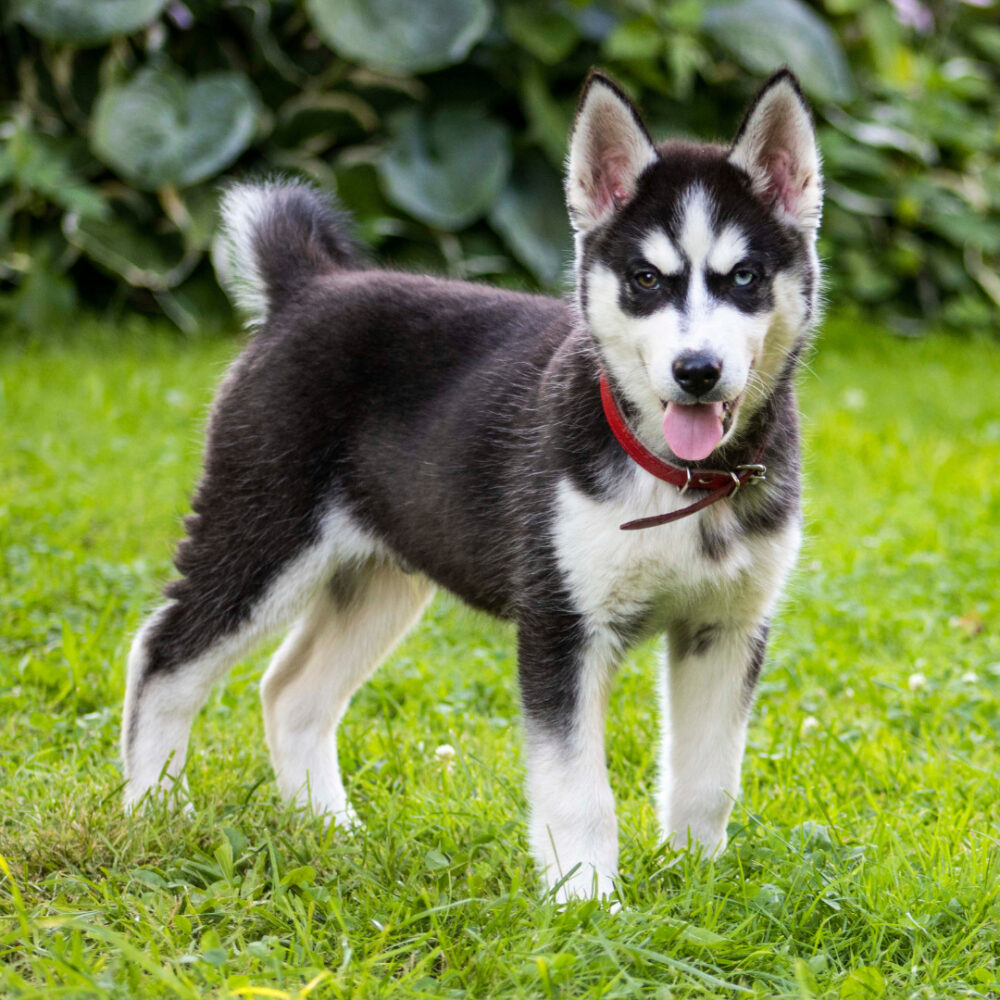
Is the Husky Teacup Dog Real?
There is no official breed of dog called a “Teacup Husky.” However, some breeders may use this term to refer to smaller-than-average Siberian Huskies. These dogs may be bred to be smaller through various methods, such as breeding from smaller-sized huskies, or breeding a husky with a smaller dog breed.
It is important to note that deliberately breeding dogs to be excessively small can have negative consequences on their health and well-being, including a higher risk of congenital defects, respiratory issues, and other health problems. Therefore, it is generally not recommended to seek out “Teacup Huskies” or any other excessively small breeds.
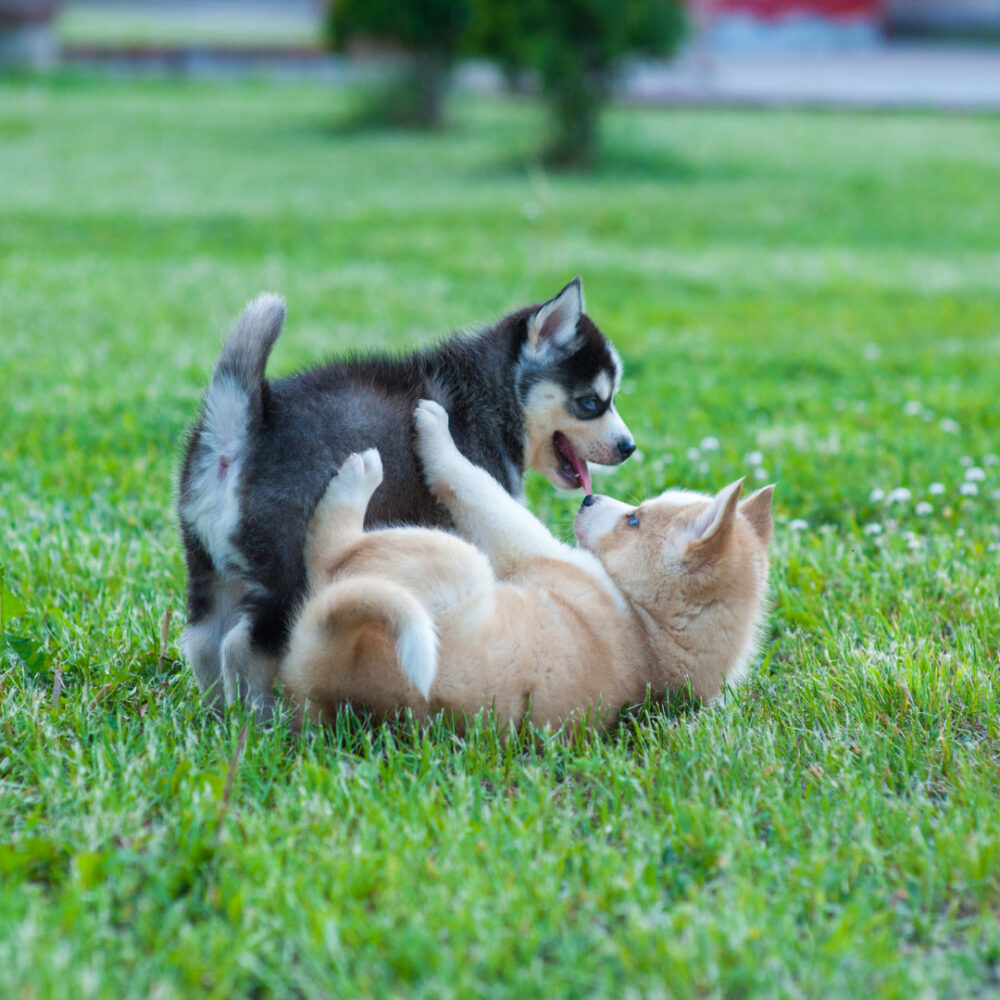
Alaskan Klee Kai vs Miniature Husky
The Alaskan Klee Kai and Miniature Husky are both small dog breeds that share some similarities, but they are two distinct breeds with several differences. Here are a few of the main differences:
Origin: The Alaskan Klee Kai is a newer breed that was developed in the 1970s, while the Miniature Husky is not a recognized breed by major kennel clubs and is not yet widely accepted as a separate breed from the Siberian Husky.
Size: While both breeds are smaller than the standard Siberian Husky, the Alaskan Klee Kai is generally smaller than the Miniature Husky. The Alaskan Klee Kai weighs between 10-20 pounds and stands between 13-17 inches tall, while the Miniature Husky can weigh between 20-35 pounds and stands between 14-17 inches tall.
Appearance: Both breeds have a similar appearance to the Siberian Husky, with thick fur, pointed ears, and a wolf-like appearance, but the Alaskan Klee Kai is often more refined and delicate in appearance than the Miniature Husky.
Temperament: Both breeds are generally friendly and intelligent, but there are some differences in temperament as well. Alaskan Klee Kai are often described as more reserved and independent than Miniature Huskies, who are generally known for their outgoing and friendly personalities.
Energy level: Both breeds are energetic and require regular exercise, but Miniature Huskies are typically more high-energy and require more exercise and activity than Alaskan Klee Kai.
Overall, while both breeds share some similarities, they are different breeds with different characteristics and requirements, so it’s important to do your research and consider your lifestyle and needs when deciding which breed is right for you.
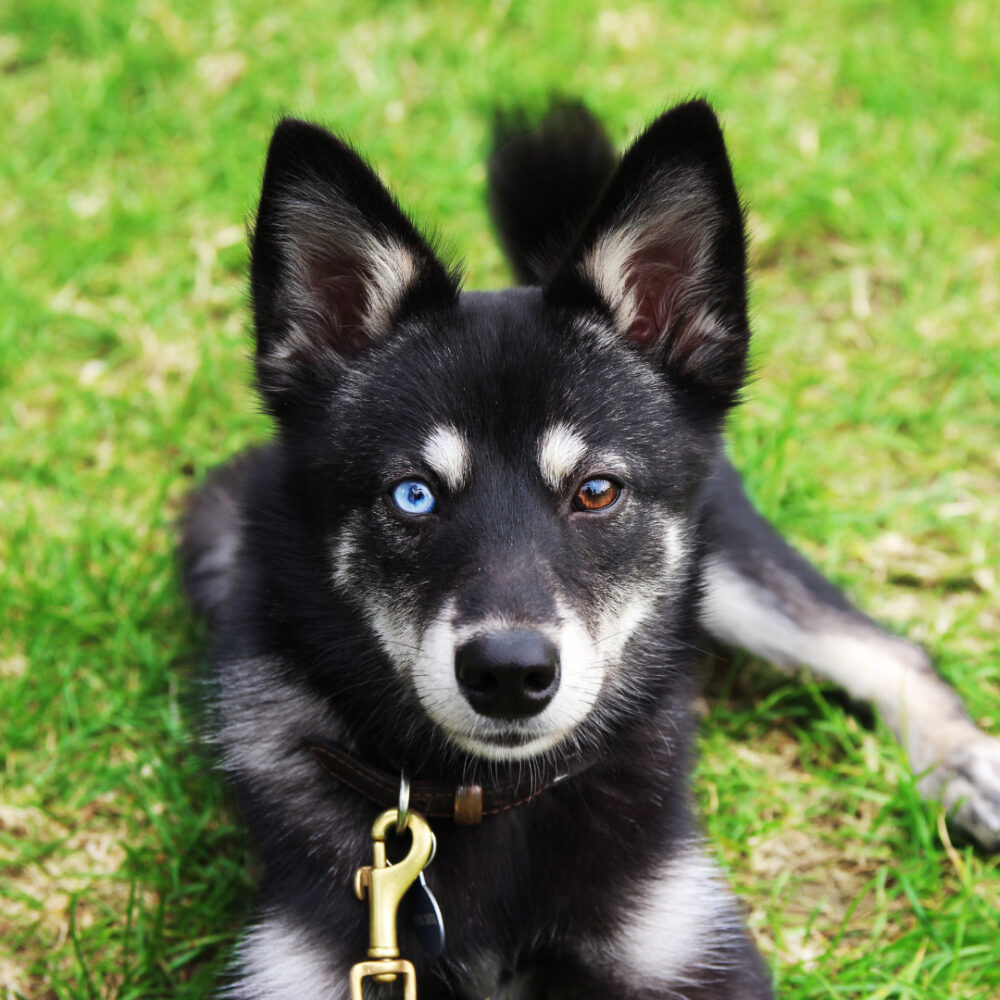
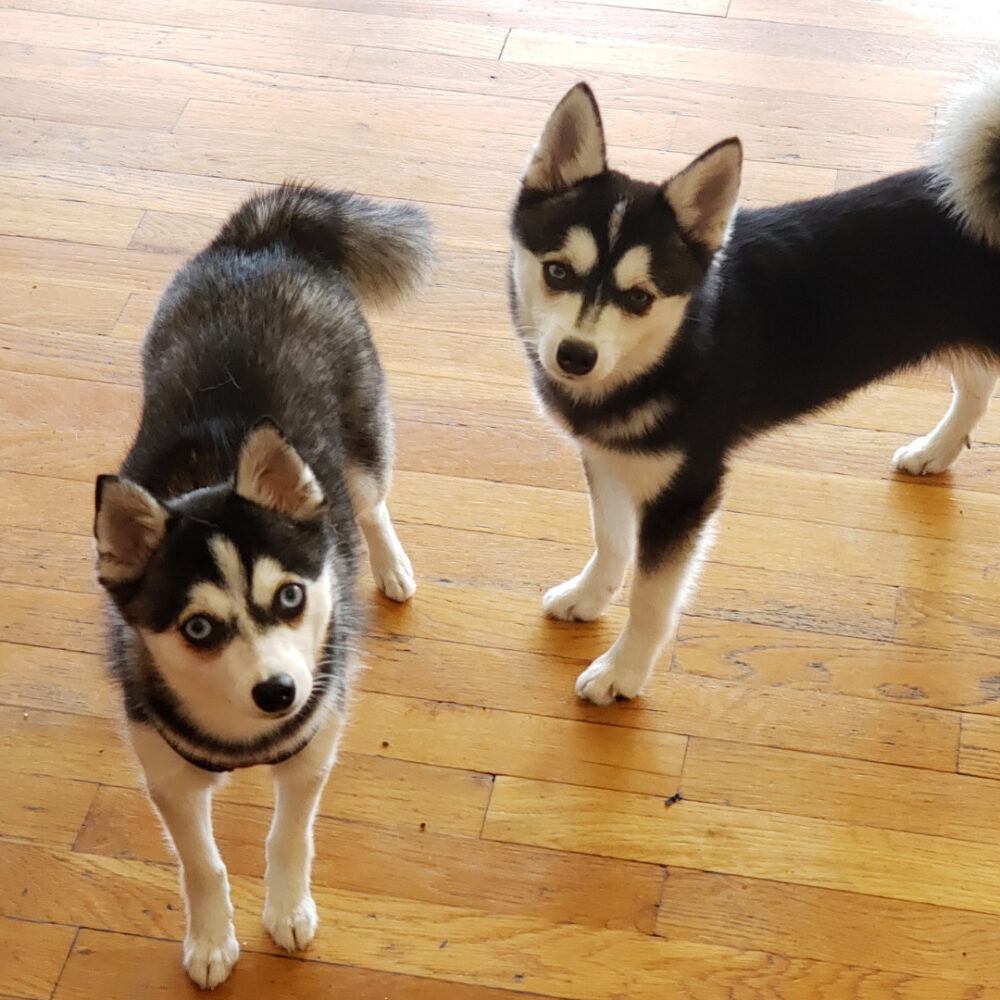
The Bottom Line
If you love the look and character of the Siberian Husky but don’t have the space to accommodate a large dog, a Miniature Husky is an ideal solution.
Energetic yet loyal, these eye-catching dogs make great pets for active families who don’t mind having their homes covered in dog hair.
A stubborn streak makes them less than ideal for novice owners, and early puppy training and socialization are vital if you want a well-mannered and obedient adult dog.
Although not a recognized breed, Miniature Huskies are gaining popularity throughout the US, with many falling for their fluffy coats, unusual eyes, and winning ways. Maybe you’re one of them.


